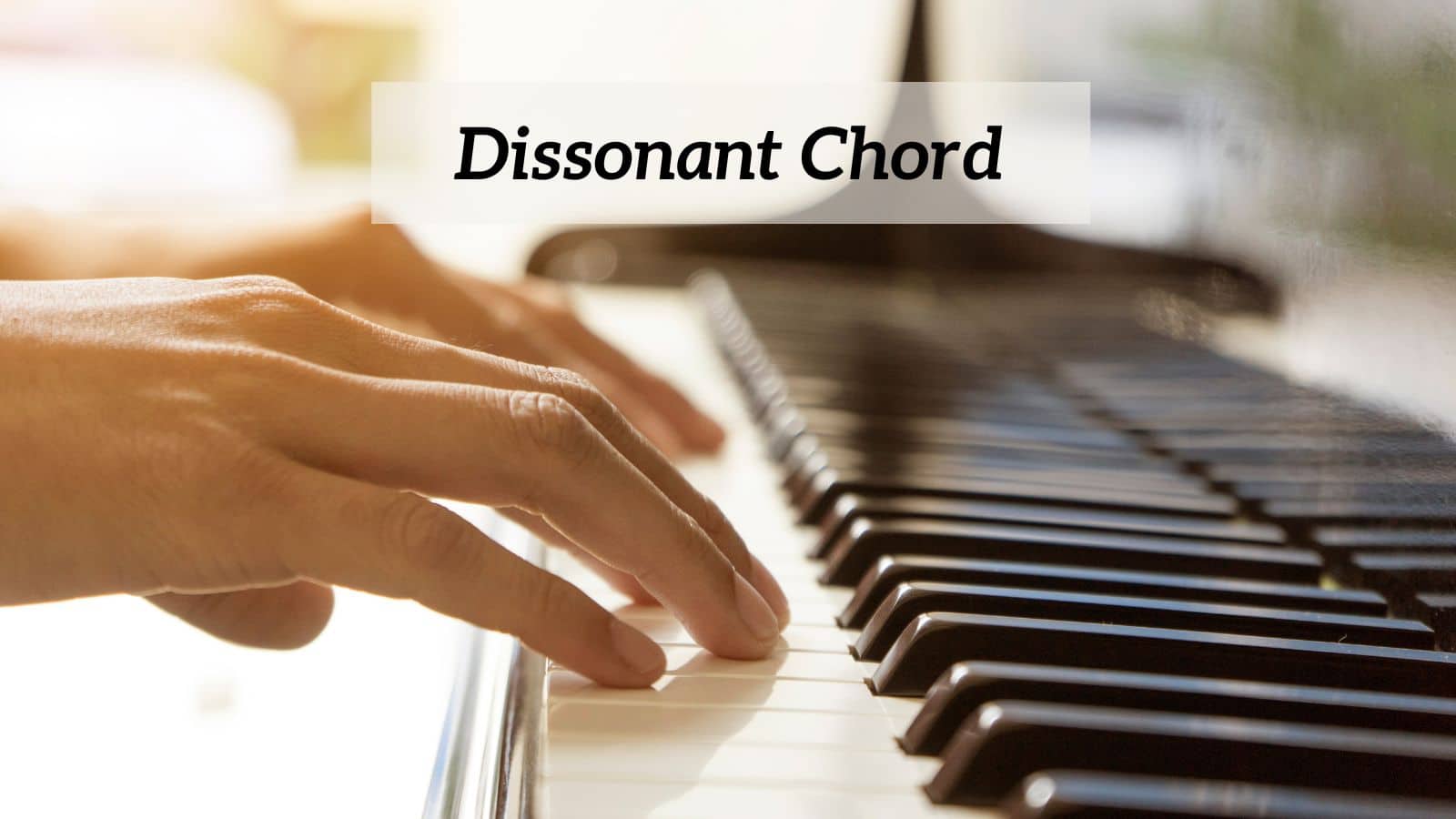
Dissonant chords are used in Western music to create tension and stir different feelings.
Merriam-Webster Dictionary defines dissonance: as “a mingling of sounds that strike the ear harshly: a mingling of discordant sounds; especially, music: a clashing or unresolved musical interval or chord”.
What is dissonance?
In music, dissonance happens when clashing or discordant sounds happen and can cause emotional or even psychological tension in us, the listeners. Dissonance can be detected in harmonies, melodies, or individual notes.
Different Types of Dissonant Chords
There are various types of dissonant which we’ll investigate next. The prime chords are built on steps one, four, and five of the scale; secondary chords are built on the scale’s second, third, sixth, and seventh steps. This is true for both major and minor scales.
Below is a summary of the four different types of chords, and our focus will fall on the augmented and diminished chords and some special ones later on.
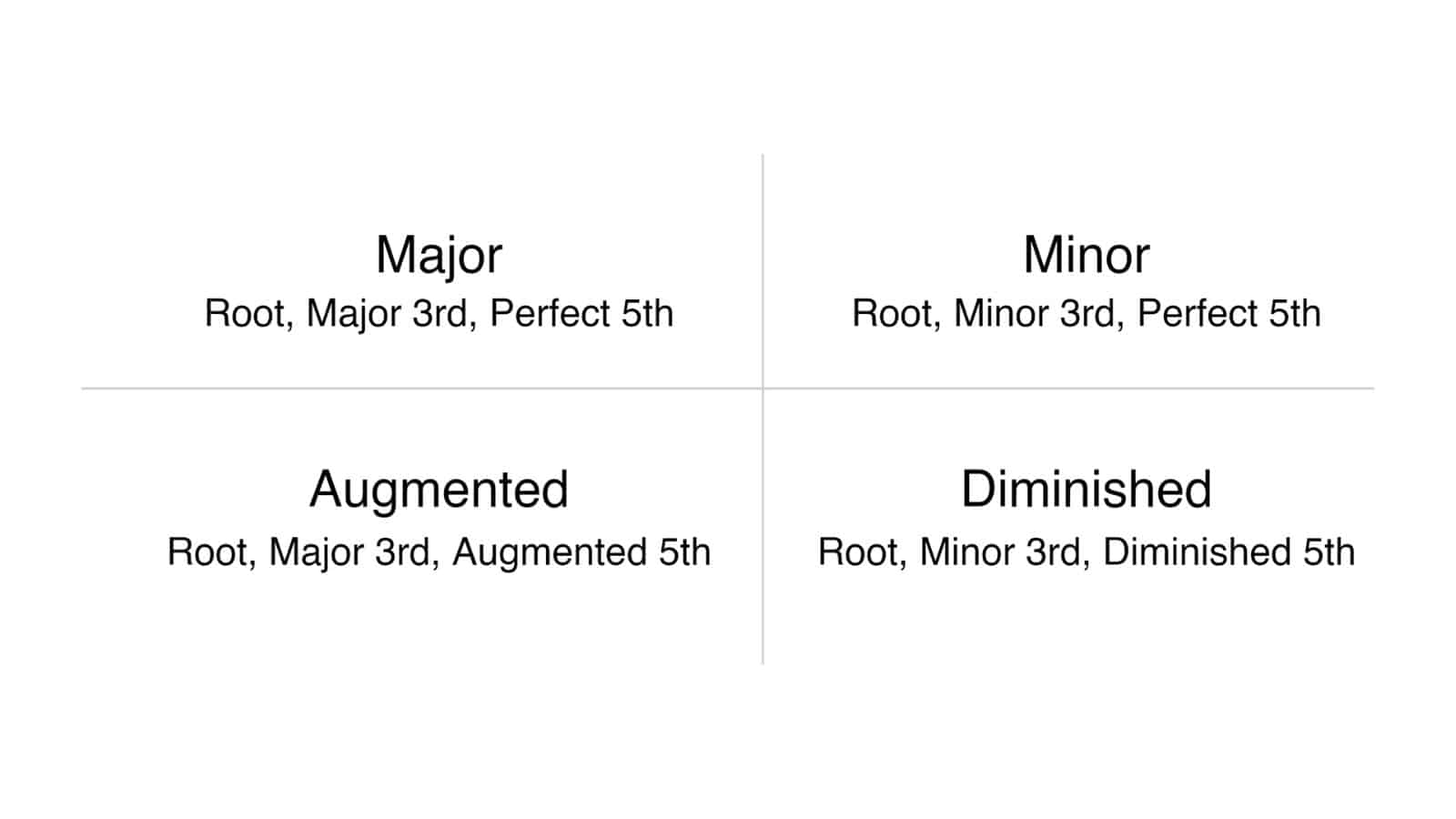
Major and Minor Chords
Let’s quickly give you the necessary background of the consonant chords before we move on to the dissonant chords.
A major chord comprises the root, a major third, and a perfect fifth; for example, C—E is a major third, and C—G is a perfect fifth. It sounds stable and pleasant on the ear.
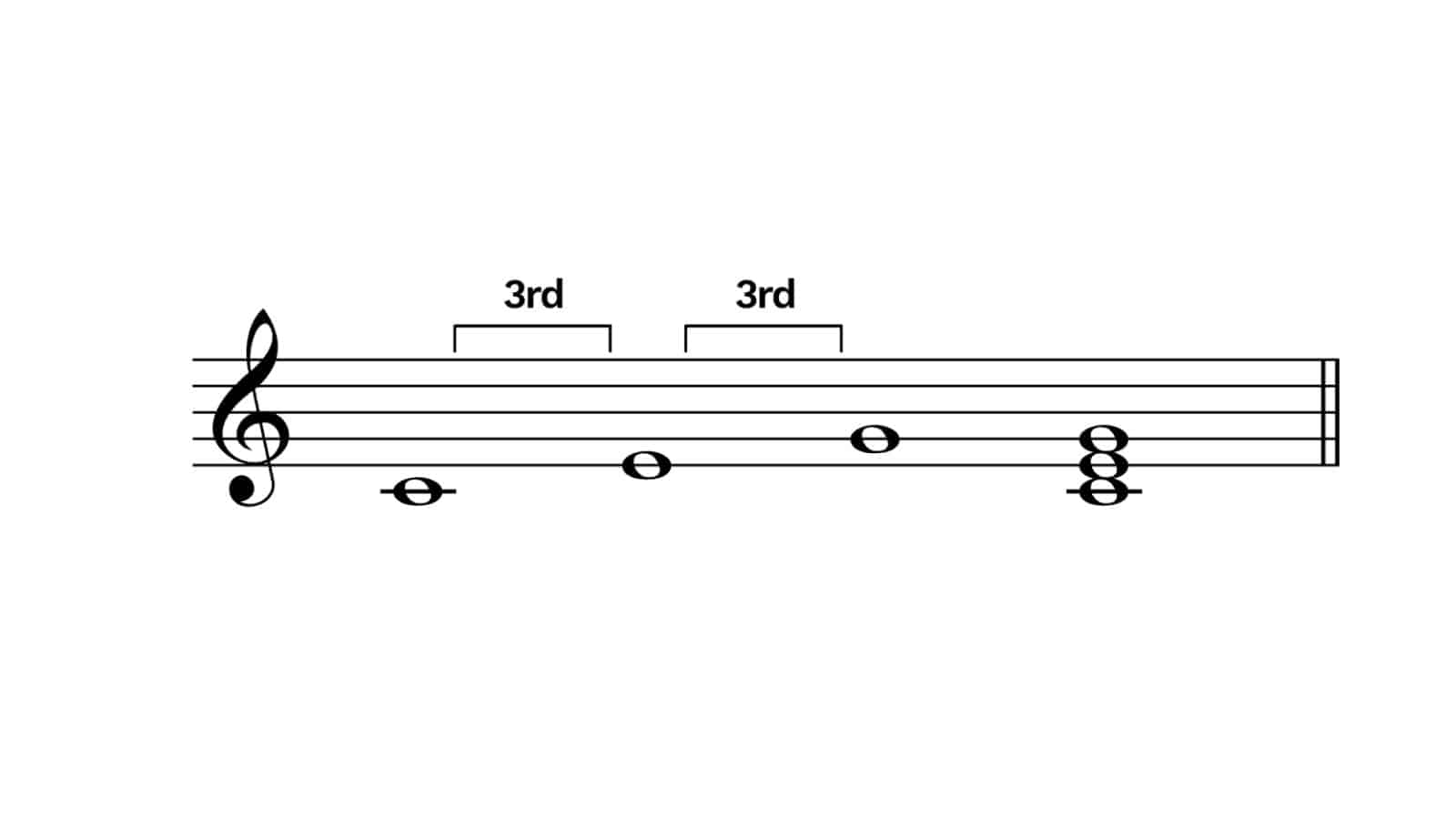
The minor chord sounds sad and somewhat dark. It is made when a minor third is placed on top of the root note, and a perfect fifth is also added to the root note:
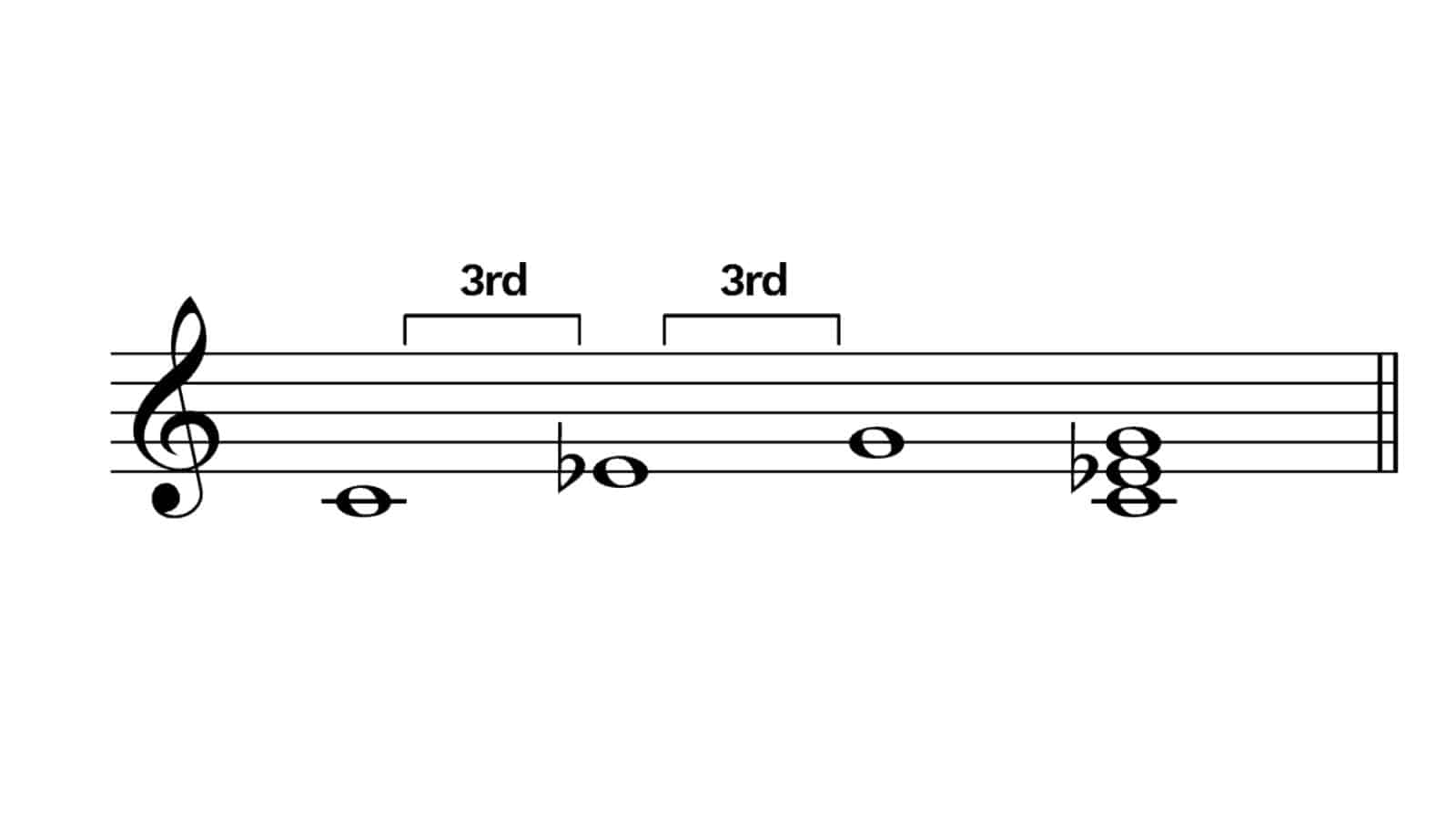
Augmented Chords
Both the prime and secondary chords can be augmented. An augmented chord happens when you stack major thirds on top of each other:
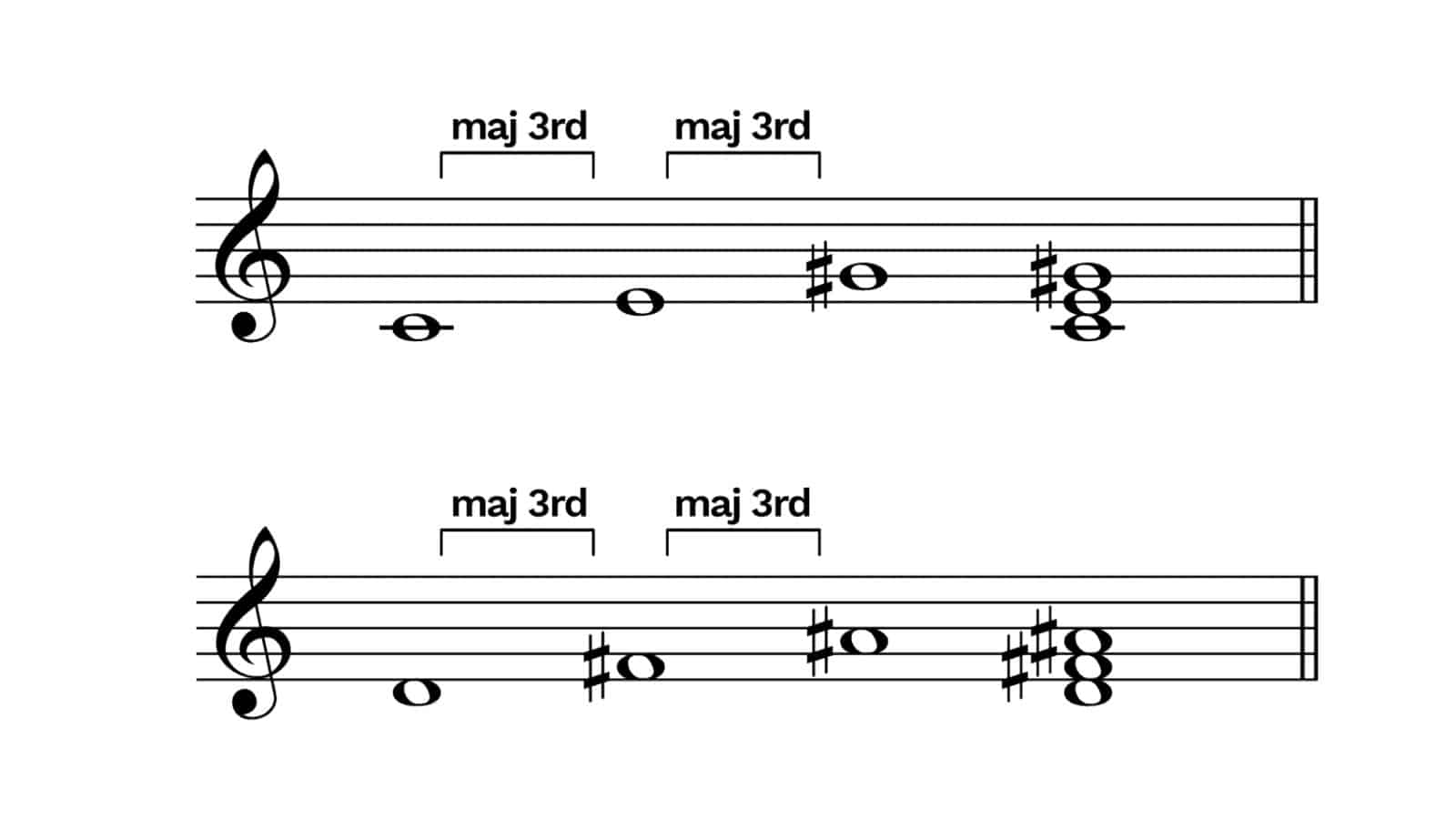
You can hear what it sounds like here at the beginning of Chuck Berry’s song School Days.
Explanation: C to E sounds good, and so does C to G, but when you jump from C to G#, it sounds a bit off or strange—this is what we call dissonance.
Diminished Chords
Diminished chords sound dark and scary, even more than a normal minor chord. A diminished chord happens when you stack two minor thirds (or more notes, as we’ll see later) on top of the root note. C→Eb is a minor 3rd, and Eb→Gb is also a minor third.
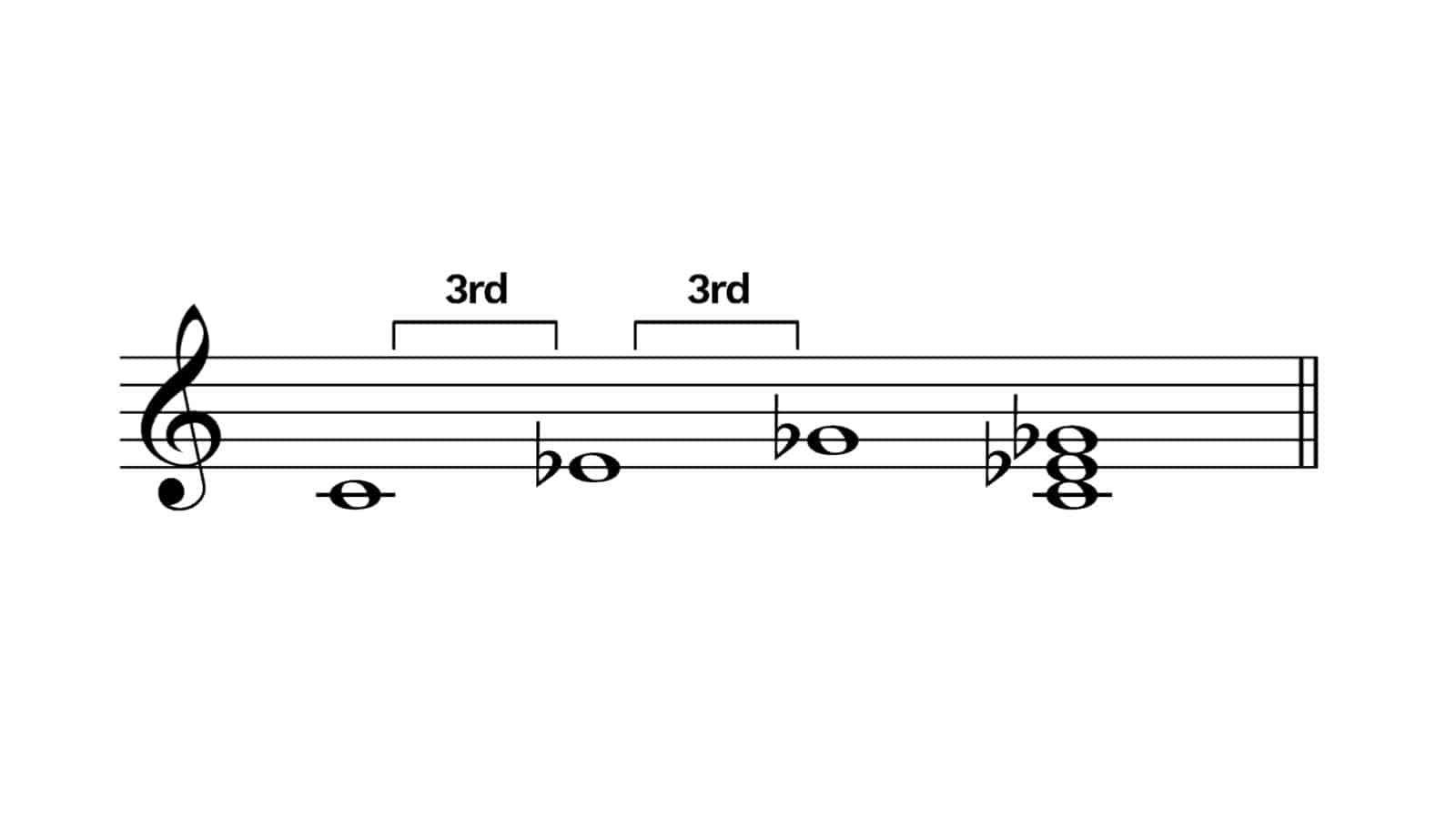
The reason for this dark sound is the tritone, or the interval of an augmented fourth/diminished fifth, as seen below:
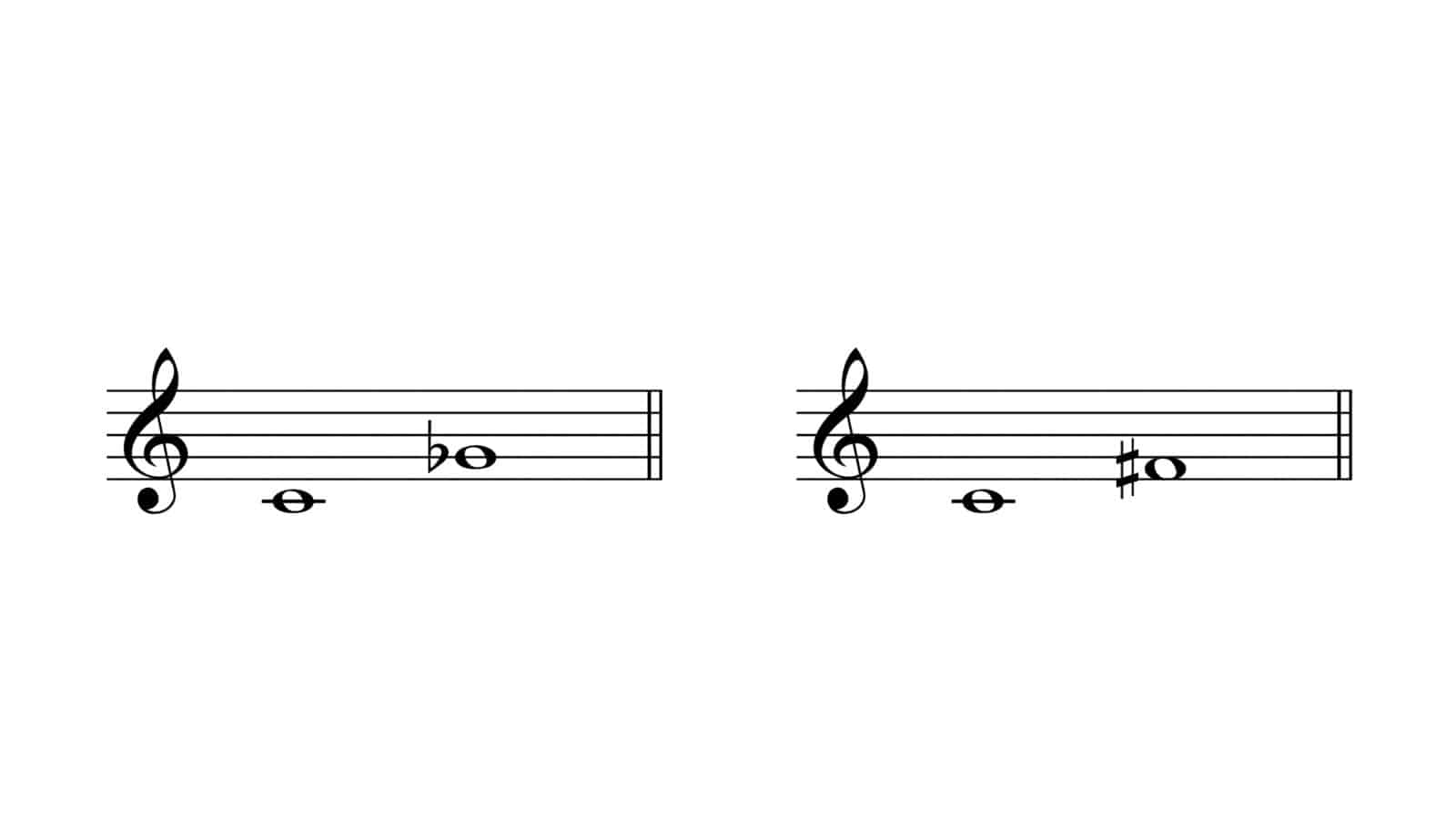
Other Types of Dissonant Chords
Now we’re moving into a lot more tricky territory: seventh chords. As the name implies, it is a chord with an added seventh. There are quite a few, so we’ll briefly touch on them. Remember, they are all dissonant chords.
The Seventh Chord
A major seventh chord is built by stacking three major intervals on top of the root note and is made up of four notes. In C major, it will use the notes C, G, E, and B and looks like this:
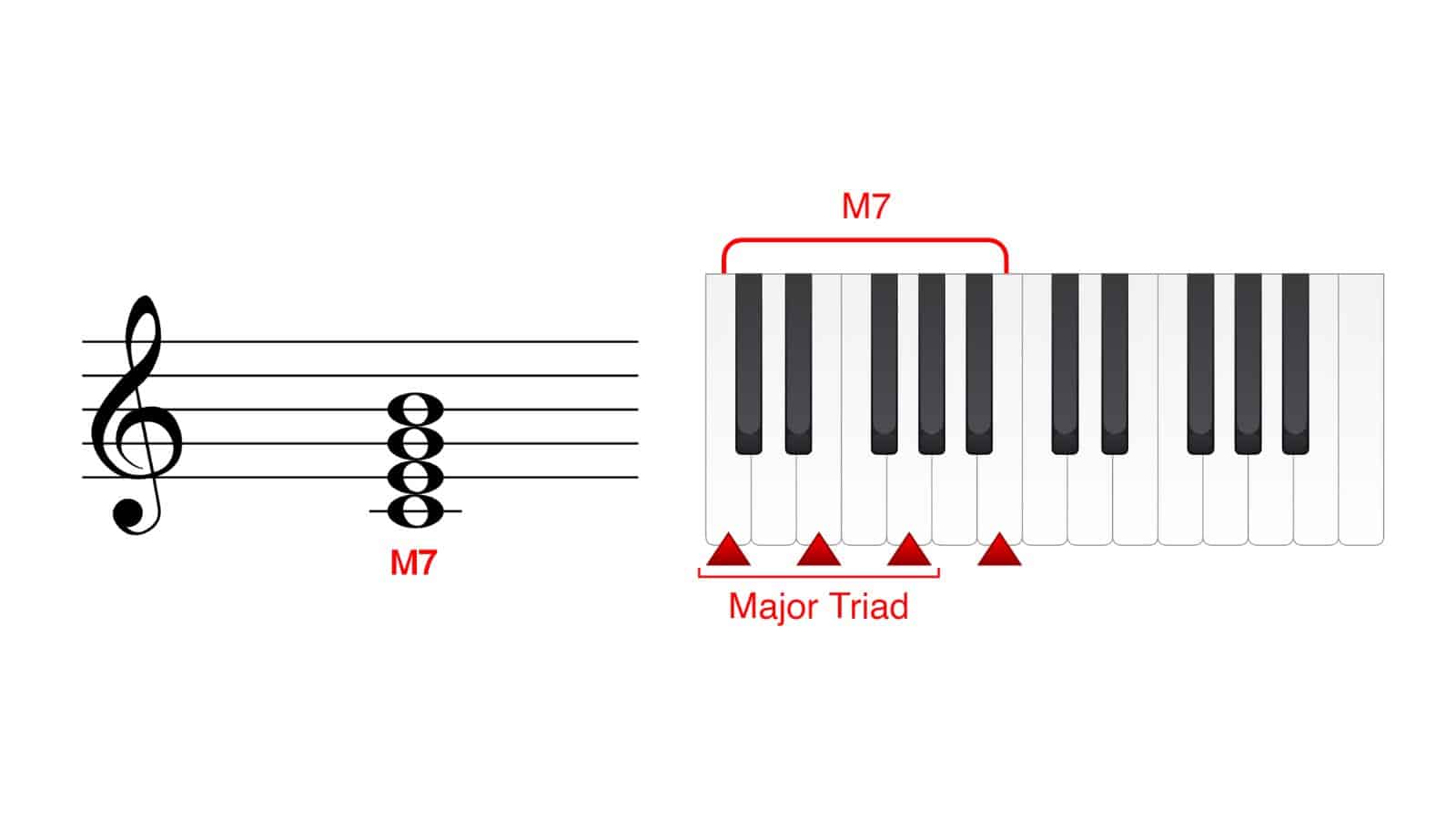
Dominant Seventh Chord
One of the most important seventh chords is the dominant seventh chord. It is built on the scale’s fifth note, the dominant. Again, it is thirds, but not a minor seventh is added to the chord:
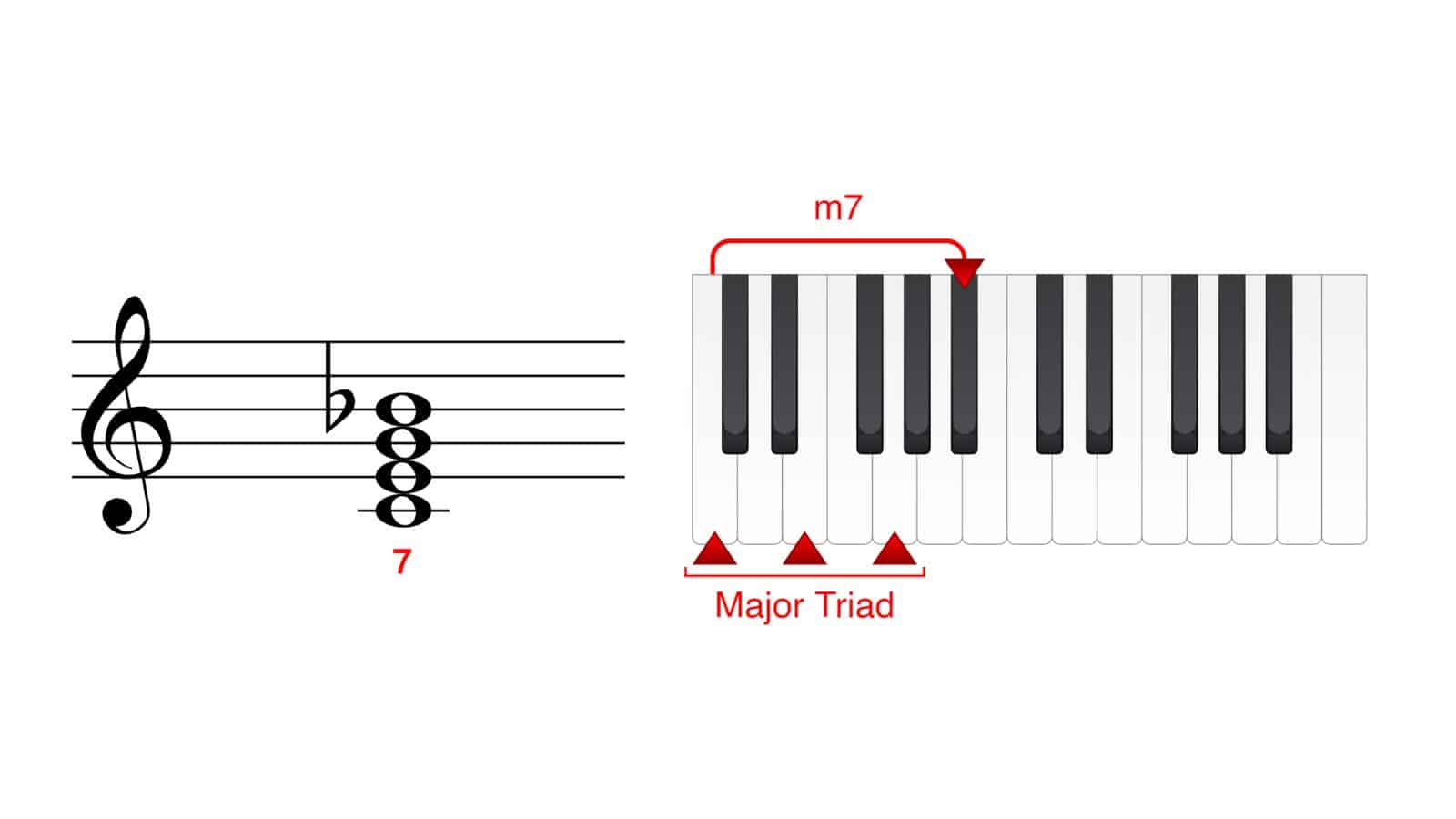
So far, not too tricky, right? Things will get more involved when we look at the minor, diminished, and half-diminished chords.
Minor Seventh Chord
This is also a commonly found dissonant chord. Instead of a major chord, we swing to minor triads, and the minor seventh forms the fourth note. We will thus have C, Eb, G, and Bb in C.
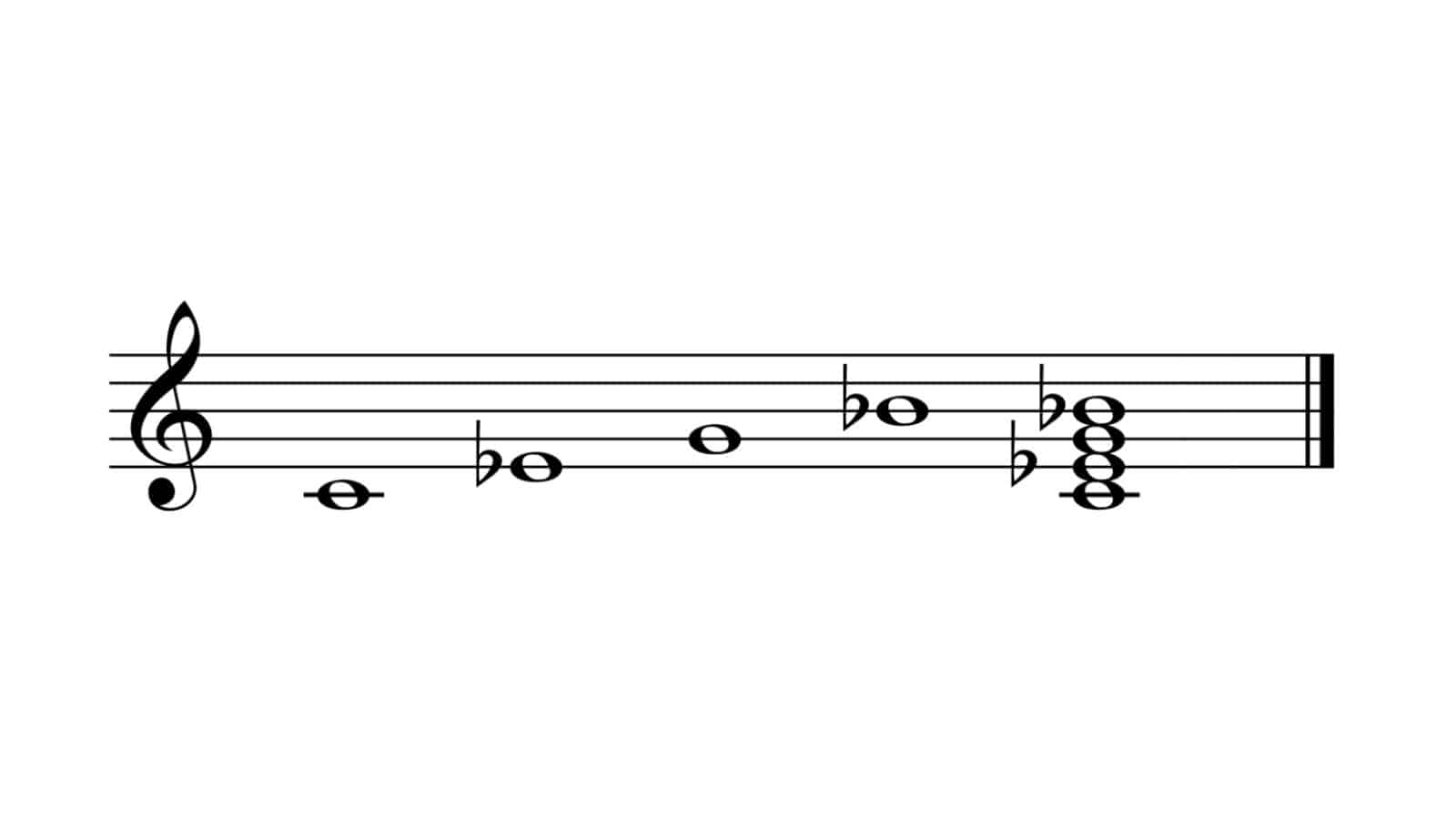
Half-Diminished Seventh Chord
When you add a minor seventh to a diminished chord, you’ll arrive at a half-diminished chord, and this chord comes from the Locrian mode.
The C diminished chord is a minor third, with a root, minor third, and a diminished fifth—adding a minor seventh will give us a half-diminished chord: C, Eb, Gb, and Bb.
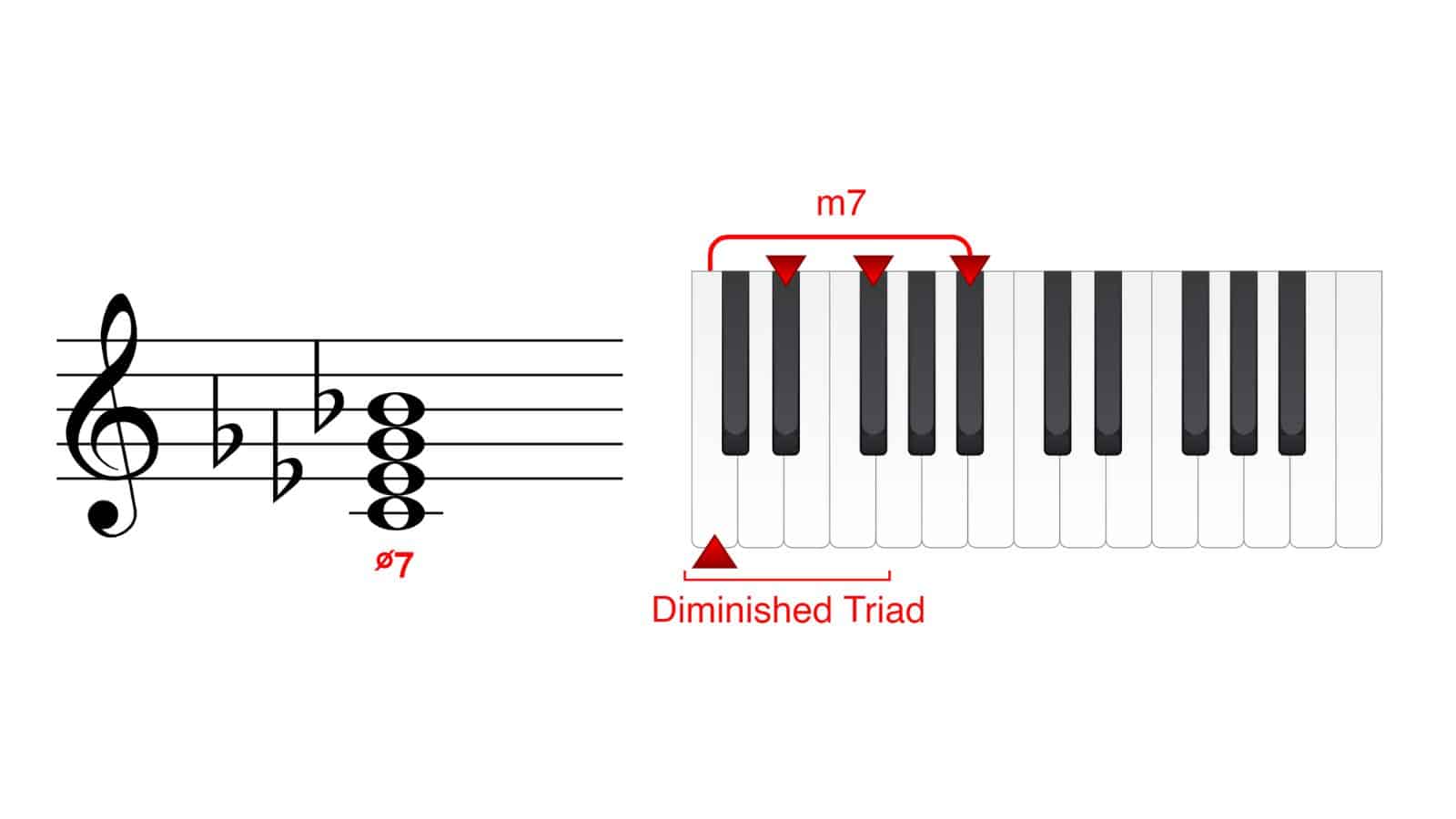
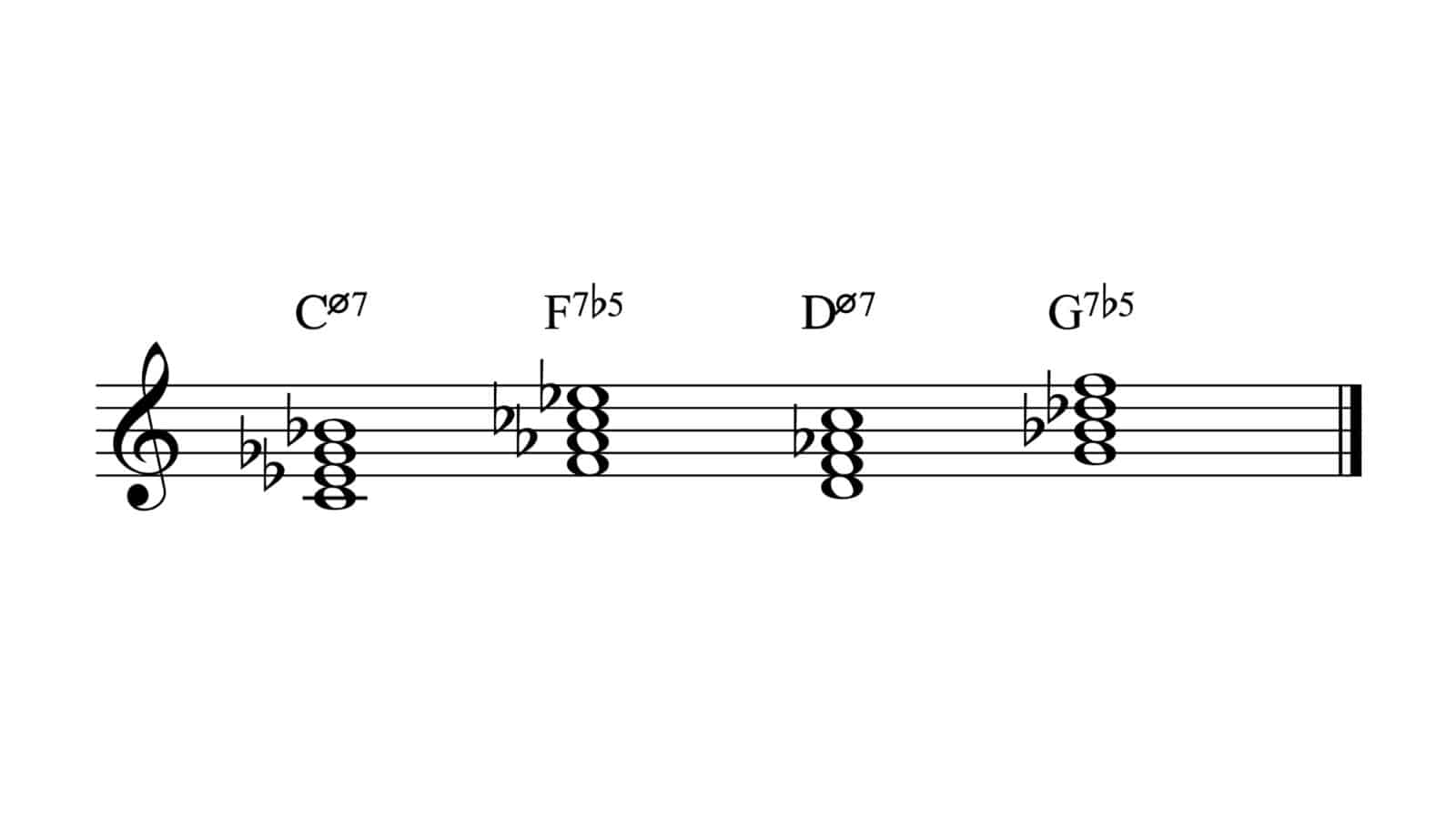
Diminished Seventh Chord
The diminished seventh chord is built when all the notes are three semitones apart. Essentially, it is a diminished triad with a diminished seventh added to it: C, Eb, Gb, and Bbb (double flat).
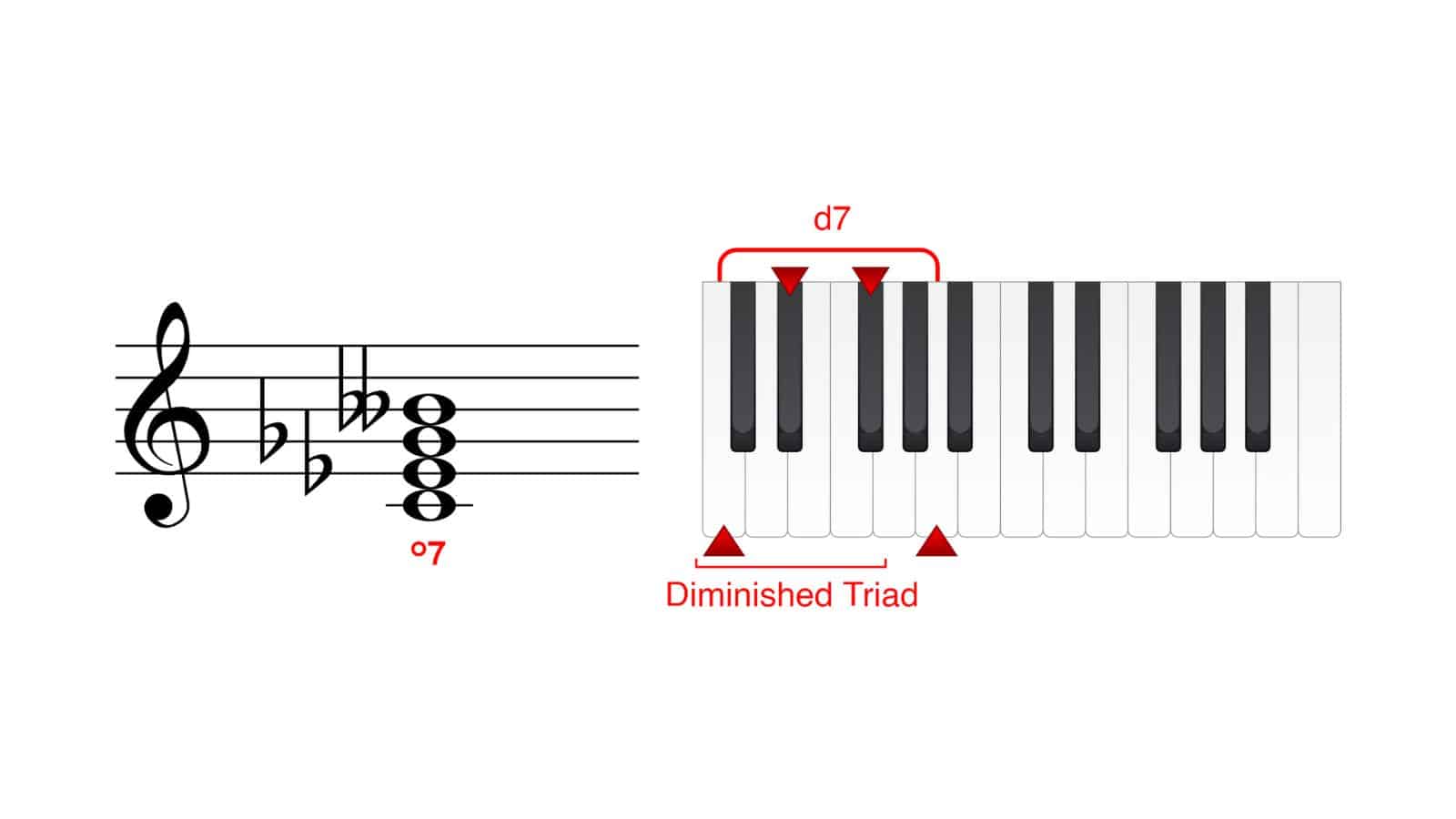
Special Dissonant Chords
There are some other interesting versions of the seventh chord, which we will briefly show to you.
Minor-Major Seventh
This is one of the scariest chords I’ve ever encountered—it combines a minor seventh chord with a major seventh: in C, we get C, Eb, G, and B. The name tells us there’s a minor third and a major seventh together in the chord.
The most famous example is in the shower scene of Alfred Hitchcock’s film, Psycho. It is also known as the Psycho chord, Hermann chord, and Hitchcock chord.
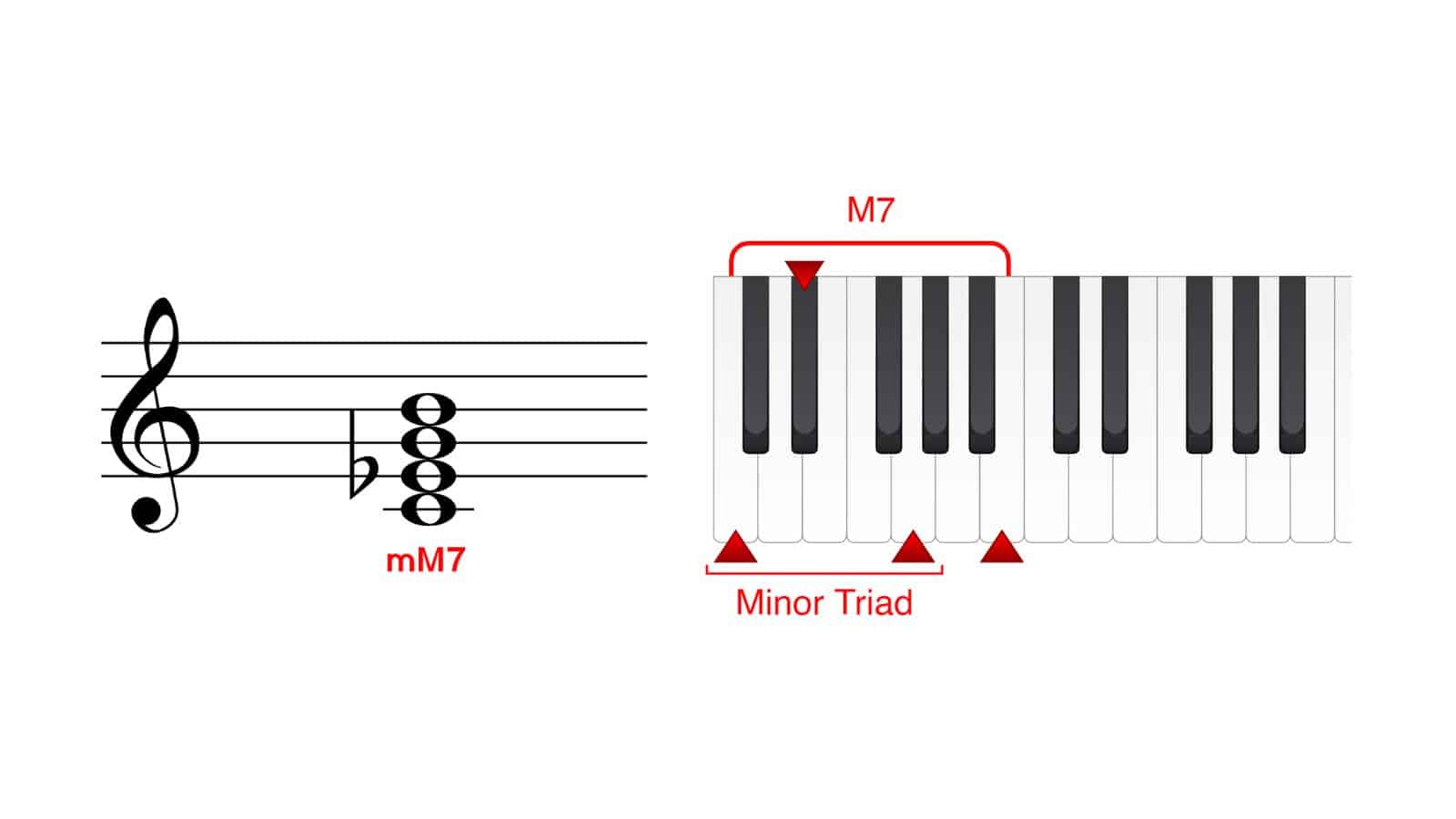
Augmented-major Seventh Chord
It is an augmented chord with a seventh, or C, E, G#, and B.
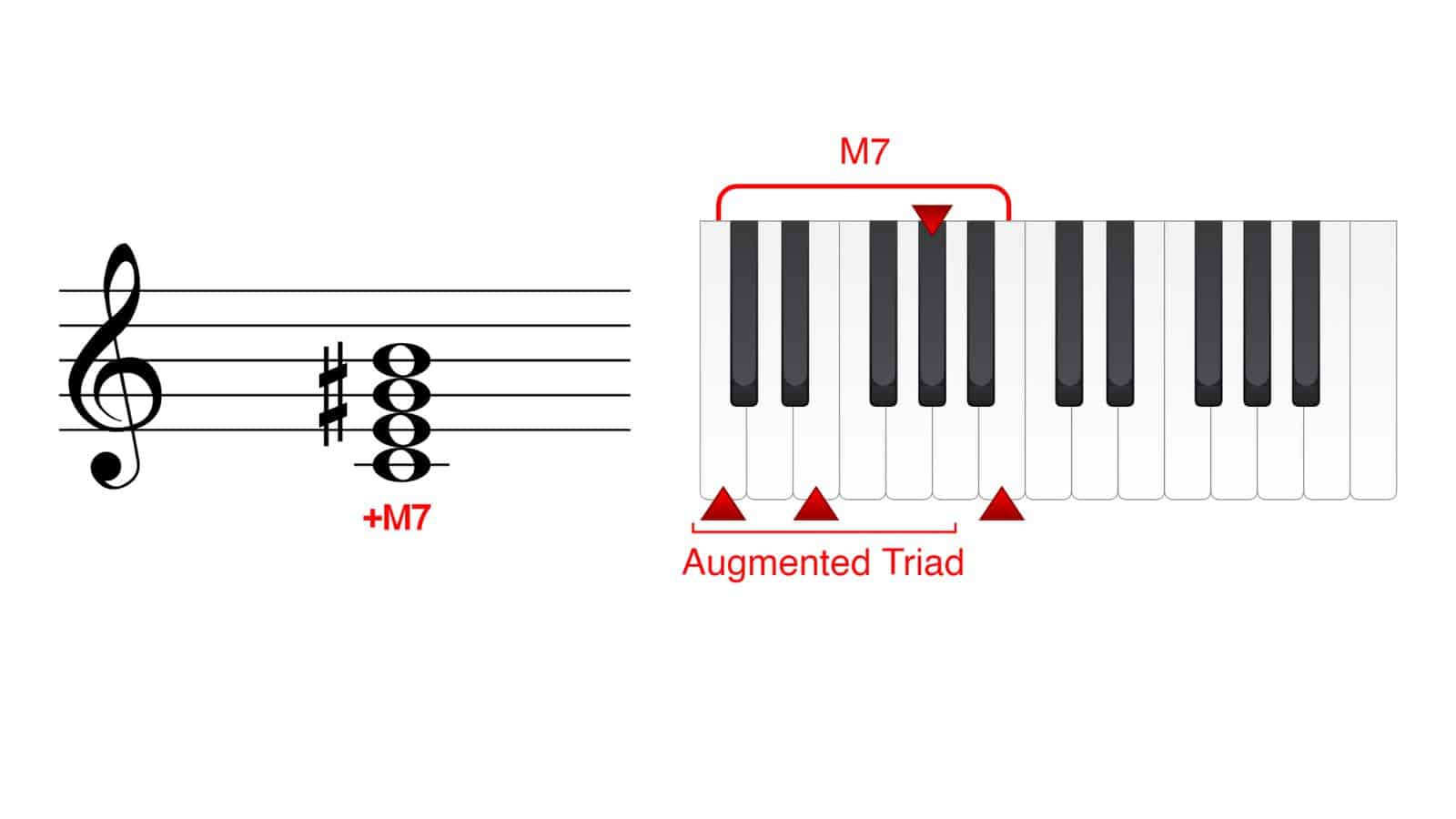
Augmented Seventh Chord
It is an augmented chord with a minor seventh, or C, E, G#, and Bb

Figure 15: C augmented seventh chord (source)
Below is a summary of all the seventh chords discussed throughout this article.

Conclusion
We have looked at a variety of dissonant chords throughout this article. The primary purpose of dissonant chords in music is to create tension in the music.
Tension drives the music forward, creates interesting contrasts, and creates opportunities for different atmospheres, such as fear, longing, anger, and many more
Remember, dissonant chords in Western music feel ‘unresolved’, and our ear wants these chords to move or resolve to a consonant chord to create a feeling of completeness.
